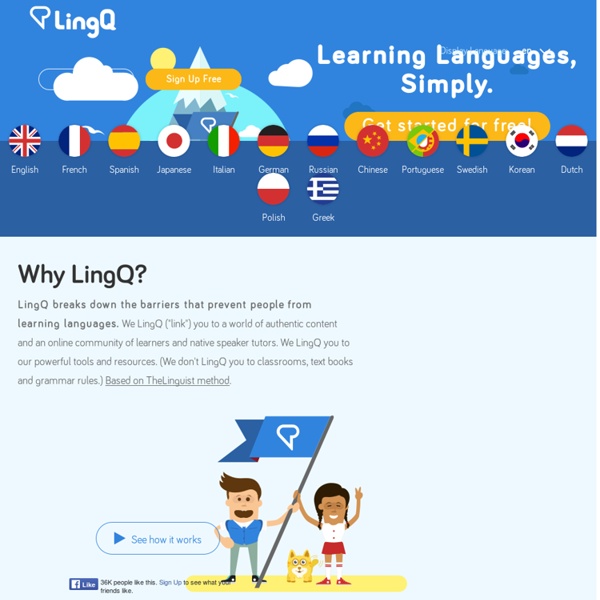



Student Fishbowl Student Fishbowl This activity requires 60-90 minutes. Purpose: Free Foreign Language Lessons How to learn languages for free? This collection features lessons in 48 languages, including Spanish, French, English, Mandarin, Italian, Russian and more. Download audio lessons to your computer or mp3 player and you’re good to go. Amharic Teach Yourself We speak your language. As the market-leading language publisher, Teach Yourself offers you authority, choice and learning flexibility. Each of our courses is designed to support and motivate you from start to finish - whatever time you have available, whatever learning method you prefer and whatever your starting ability. We publish courses in 60 different languages, so whatever you want to learn, we speak your language...
16 Common Core Technology Tools 16 Common Core Technology Tools For Speaking & Listening by Dr. Melissa Comer and Dr. Leslie Suters, Presenters at the 2014 Teaching and Learning with the iPad Conference Foreign Language Teaching Methods About the Site Foreign Language Teaching Methods focuses on 12 different aspects of language teaching, each taught by a different expert instructor. The site contains video footage from an actual methods course held at the University of Texas at Austin. This flexible resource is designed to be used by foreign language teachers as a component of a classroom methods course or as a stand-alone course for independent learners. “While I was taking this course, I was already changing what I was doing and I can already see the difference. ”
Motivating speaking activities for lower levels Planning time has been shown to increase production in speaking tasks. Lower level learners often find it especially difficult to speak spontaneously, so these activities incorporate 'thinking time' during which learners can prepare for speaking by planning what they are going to say, and asking the teacher or using a dictionary to look up missing vocabulary. The following activities are relatively short, with minimal materials preparation time for the teacher. They are designed for use as a warmer or a filler in the middle or at the end of a class. 2007 February 5 - Comet Between Fireworks and Lightning Discover the cosmos! Each day a different image or photograph of our fascinating universe is featured, along with a brief explanation written by a professional astronomer. 2007 February 5
ESL Speaking Activities There are many approaches to ESL speaking activities which used in English classes. Some are focussed on pronunciation, some more basic speaking activities are controlled or guided activities, and finally ESL discussion or conversation activities. All are important. In this article I will focus on speaking activities which offer controlled practice, and thus the support that so many students need. Teaching English pronunciationis discussed here, and ESL discussions here. Developing Speaking Activities Traditional classroom speaking practice often takes the form of drills in which one person asks a question and another gives an answer. The question and the answer are structured and predictable, and often there is only one correct, predetermined answer. The purpose of asking and answering the question is to demonstrate the ability to ask and answer the question. In contrast, the purpose of real communication is to accomplish a task, such as conveying a telephone message, obtaining information, or expressing an opinion. In real communication, participants must manage uncertainty about what the other person will say. Authentic communication involves an information gap; each participant has information that the other does not have.